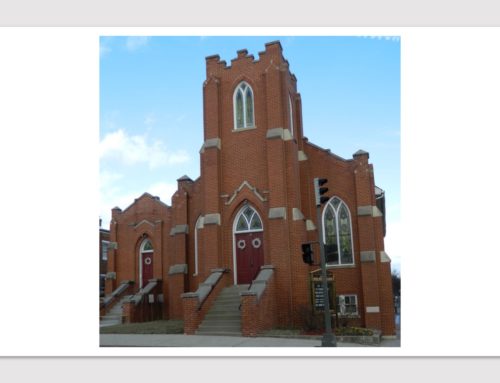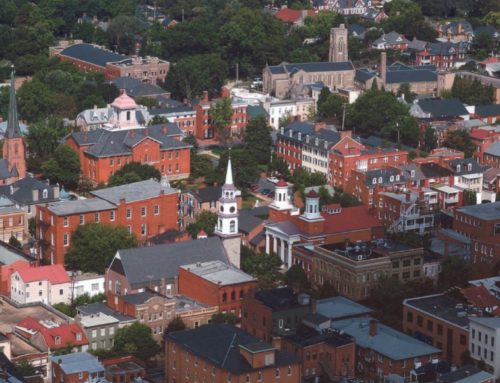Excerpt from the Frederick News-Post:
A West Third Street property owner will get a second chance to persuade the city’s Historic Preservation Commission to let him keep a gas meter on the front of his building.
James Callear bought the brick town house at 133 W. Third St. in the Frederick Town Historic District about seven months ago, planning to renovate it and turn it into rental apartments. His plans hit a snag late last year when he learned that a meter that Washington Gas installed in front of the building went against the city’s historic district guidelines.
The guidelines state that utility boxes and meters cannot be installed on the facades of historic buildings. Callear said he was unaware of that rule despite a history of owning and renovating other properties within the district. The guidelines state that the commission can, however, approve meter boxes on building fronts if no other option is available.
Callear, citing information from the gas company, said the facade is the only viable location that meets the utility’s safety and access requirements. He took that information to the Historic Preservation Commission in December in hopes of persuading commissioners to let the meter remain in front of the building. But in a 5-2 vote, members denied Callear’s request, prompting him to bring the matter back to the commission again Thursday for reconsideration.
Callear’s application for reconsideration, filed Dec. 16, says city staff told him his request was a routine HPC matter and could be approved administratively. The application also includes city code provisions on placement and accessibility of gas meters and information about Washington Gas and its requirements for meter placement.
The application said Callear met with representatives from Washington Gas after the commission denied the request. The representatives reportedly looked into placing the meter in the alley or the cellar of the building, but neither option would work.
The application also referenced a letter from the gas company, dated Dec. 14, stating that “the current placement of the gas meter is the only viable location that meets requirements, including safety and access.”
After some discussion Thursday, the commissioners voted 5-1 to reconsider the request at a future meeting. Their comments, however, did not indicate that a second vote would be any different than the first one.
Commissioner Carrie Albee, who made the motion to reconsider the request, made it clear that she is not in favor of the current location of the meter and believes the gas company has alternatives. She sympathized with Callear’s position, however.
“I’m very much opposed to the location of gas meters outside of houses,” she said. “The guidelines say we can approve them on the facade of a property if there is no other alternative and the applicant is telling us he’s been told there’s no other alternative. I don’t believe Washington Gas, but I believe the applicant does. … I believe that’s what they’ve told him.”
The majority of the commissioners said their issue is with the utility company, not with Callear. But that does not help Callear move forward.
“This is effectively denying me the ability to have gas service at the property,” Callear said. “I would be happy to pursue any avenue that would satisfy you folks. But like I said, it’s not my meter. I can’t decide to move it.”
In an emailed statement on Friday, Bernie Tylor, a media relations manager for Washington Gas, wrote that the utility evaluates each site to see what options are available for meter placement that meet its requirements and customers’ needs. The statement said the utility can often place meters somewhere other than the front of a building.
Tylor’s statement said representatives met with Callear and “determined that his property line was too close to his neighbor’s property line for the service and meter to be installed on that side.”
It also said Washington Gas meters have been placed on the fronts of properties in downtown Frederick for a long time, and some were in place before the Historic Preservation Commission existed.
The statement discussed the permitting and installation process the utility follows.
“When we apply for our permits, we include a drawing with installation details,” the statement said. “When we receive the permit, we proceed with our installation in accordance with the approved permit. We always make every effort to make ourselves available to clarify our responsibilities with our customers and constituents.”
The commission will discuss the matter again at a future meeting, which has not yet been scheduled.
Photo Credit: Dan Gross



